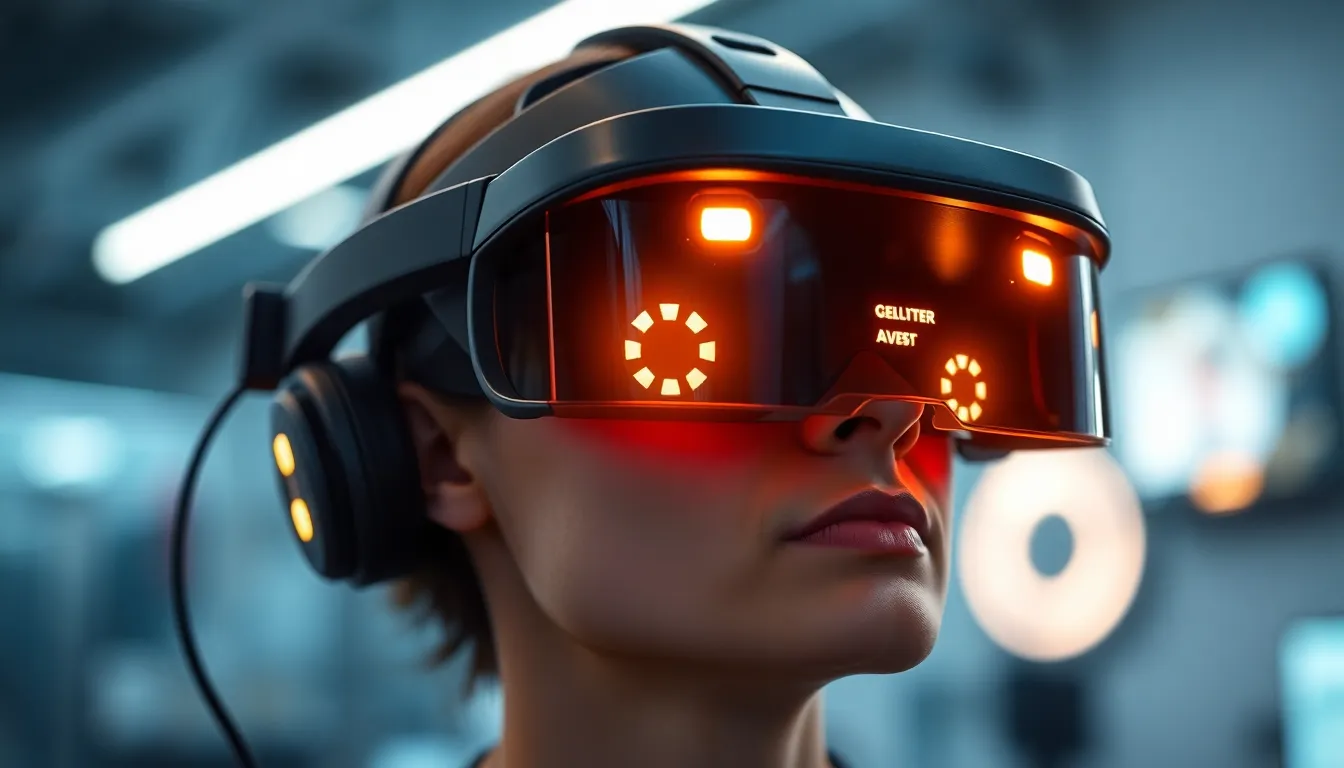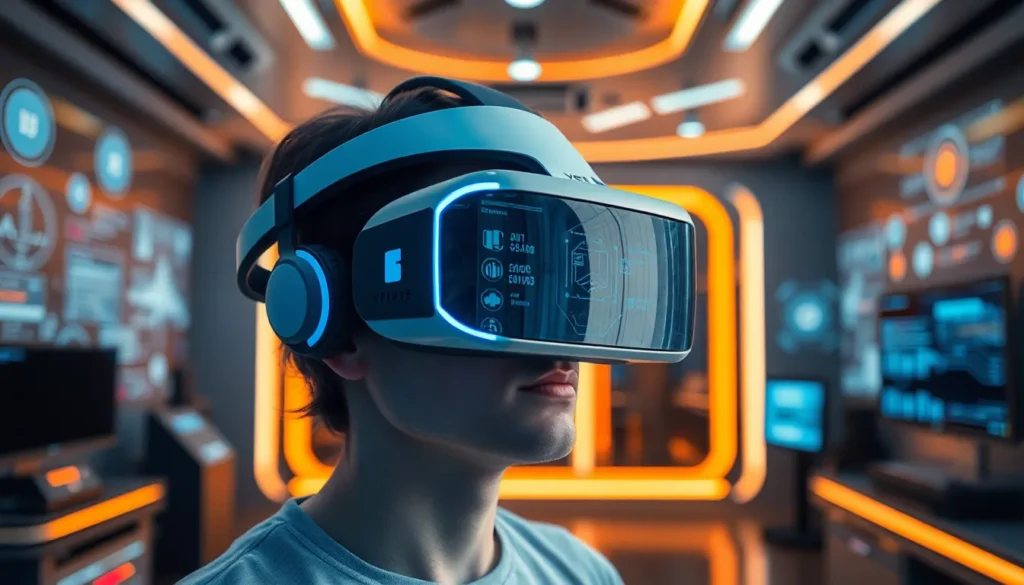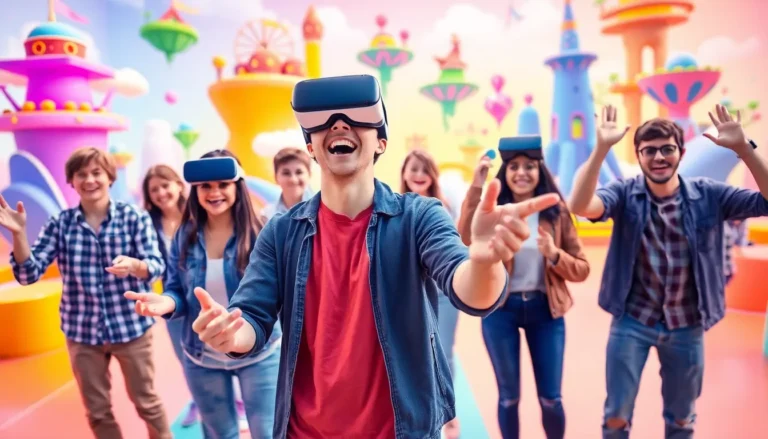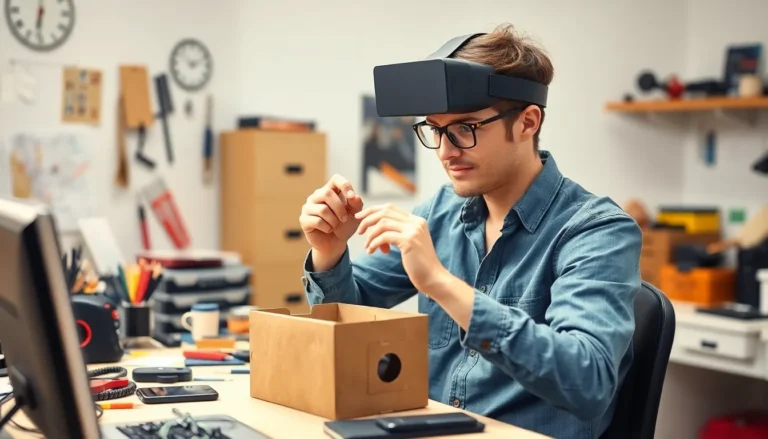Table of Contents
ToggleImagine a world where your gaze can control the action in virtual reality. That’s the magic of VR eye tracking—a technology that’s changing the game in immersive experiences. Gone are the days of clunky controllers and awkward hand gestures. Now, all it takes is a glance to navigate, interact, and fully engage with virtual environments.
Overview of VR Eye Tracking
VR eye tracking represents a significant advancement in virtual reality experiences. This technology captures users’ eye movements, translating them into inputs for interaction within virtual environments. By utilizing advanced sensors and algorithms, VR systems gain insights into where users focus attention, allowing for a more personalized and engaging experience.
Accuracy plays a crucial role in VR eye tracking. High precision ensures that the system responds correctly to users’ gazes, facilitating seamless navigation and interaction. According to industry studies, accurate eye tracking can enhance user engagement by up to 50 percent, significantly improving the overall experience.
Applications of VR eye tracking extend across various fields. In gaming, developers create immersive gameplay experiences by integrating gaze-based mechanics. In education, trainers use it for simulations that enhance learning through observation. Healthcare professionals leverage eye tracking for patient assessments in mental health and rehabilitation.
Improved performance results from eye tracking’s ability to optimize rendering techniques. By reducing the graphical load on areas where users are not looking, systems enhance performance without sacrificing visual quality. This technique, referred to as foveated rendering, efficiently utilizes processing power and graphics capabilities.
Safety considerations exist alongside the benefits. Users must be aware of their surroundings when immersed in virtual environments. Developers often implement safety features that alert users to real-world hazards, ensuring a safer experience overall.
Research continues to enhance the potential of VR eye tracking. Innovations aim to refine algorithms for better tracking speed and accuracy. Future developments may introduce further applications, creating even more dynamic and interactive virtual encounters.
How VR Eye Tracking Works

VR eye tracking technology captures and interprets human gaze, creating an interactive experience. This innovative approach allows for greater user engagement and immersion in virtual environments.
The Technology Behind Eye Tracking
Sensors play a vital role in eye tracking, capturing position and movement with precision. Cameras often monitor the eyes, utilizing infrared light to illuminate them. Algorithms then analyze this data, translating movements into actionable inputs. Machine learning enhances accuracy, enabling systems to adapt to individual users. Each component works together, ensuring real-time responsiveness in virtual applications.
Types of Eye Tracking Systems
Active systems utilize infrared light for illumination, providing clear images of the eye. Passive systems, on the other hand, rely on ambient light to track movements and are often less complex. Remote eye tracking occurs at a distance, allowing users to interact without direct contact. In contrast, mobile eye tracking integrates into handheld devices for portable applications. Each type serves specific purposes across various fields, catering to diverse user needs in VR environments.
Applications of VR Eye Tracking
VR eye tracking significantly transforms various sectors, enhancing interactions and user experiences in virtual environments. Its capabilities extend beyond gaming and education, impacting healthcare and marketing. Here are key applications:
Gaming and Entertainment
Gaming benefits immensely from VR eye tracking. Developers use this technology to create immersive gameplay experiences. Players engage more fully when their gaze controls in-game actions, like aiming or interacting with objects. Eye tracking fosters realism in narratives, allowing for nuanced storytelling based on player focus. Notably, this technology improves player retention, with studies indicating engagement increases by up to 50 percent. Games that leverage eye tracking often feature adaptive challenges, where difficulty adjusts based on gaze patterns, creating a dynamic experience tailored to individual players.
Education and Training
Education leverages VR eye tracking for effective learning and training outcomes. The technology enables personalized educational experiences by adapting content based on students’ focus areas. Teachers can gain insights into student engagement and comprehension through eye movement analysis. Engaging simulations allow learners to practice real-world skills in a controlled setting, enhancing retention rates significantly. For example, medical training programs utilize eye tracking to assess student performance during surgical simulations, improving training methods and minimizing risks. This personalized approach promotes deeper understanding and skill acquisition across diverse educational disciplines.
Benefits of VR Eye Tracking
VR eye tracking offers numerous advantages that enhance interaction in virtual environments. Users experience a more immersive and intuitive experience, enabling focus on relevant elements without distractions.
Enhanced User Experience
User experience improves significantly with VR eye tracking. Eye movement translates into direct interaction, removing the need for physical controllers. By allowing users to engage simply through gaze, this technology increases immersion and fluidity in gameplay or simulations. Participants achieve a deeper sense of presence, as they feel more connected to the virtual environment. Enhanced realism promotes longer engagement, making experiences in gaming and training more captivating.
Data Collection and Analysis
Data collection gains precision through VR eye tracking technology. Tracking eye movements provides insights into user behavior and preferences. This information aids developers in understanding how users interact with content, allowing for tailored experiences. Analysis reveals which aspects of a virtual environment attract attention, enhancing future design decisions. Educational tools benefit from detailed analytics, providing educators with understanding of student engagement and comprehension patterns. By leveraging these insights, industries optimize user experiences across diverse applications.
Challenges and Limitations
While VR eye tracking offers innovative advancements, several challenges and limitations persist.
Accuracy and Calibration Issues
Accuracy in eye tracking can fluctuate based on individual variations in eye shape and movement. Calibration processes often prove essential for ensuring precise alignment with users’ eye movements. Differences in lighting conditions can also impact tracking accuracy, leading to inconsistent performance. Some systems require repeated calibrations to maintain reliable functionality, which may disrupt the user experience. Striking a balance between user comfort and engaged interaction remains a crucial focus for developers.
Privacy Concerns
Privacy concerns surrounding VR eye tracking warrant attention. Users’ gaze data can reveal sensitive information about preferences and habits, raising ethical questions. Developers face pressure to implement robust data protection measures to safeguard users’ information. Clear communication on data usage remains vital for fostering user trust. As applications expand across sectors, navigating these privacy challenges becomes increasingly essential for ensuring wide adoption and acceptance of the technology.
VR eye tracking is revolutionizing the way users interact with virtual environments. By allowing gaze to control actions, it enhances immersion and engagement across various fields. Its applications in gaming and education highlight its potential to personalize experiences and improve user retention.
As this technology continues to evolve, addressing challenges like accuracy and privacy will be essential. Developers must prioritize user safety and trust while refining tracking capabilities. The future of VR eye tracking promises even richer interactions and experiences, paving the way for innovative applications that enhance both entertainment and learning.







